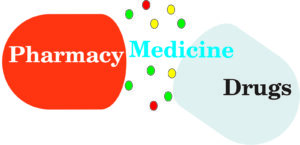Diagnosis of Asthma
Exacerbations of asthma symptoms equates to an individual’s control of their asthma. To prevent long term complications of airway remodeling, early detection with an accurate diagnosis is needed to exclude other diseases and causes for difficulty breathing. For example, Chronic obstructive pulmonary disease, Congestive heart failure, Pulmonary embolisms or mechanical obstruction (from tumors). Asthma diagnosis is based on several factors, including a detailed medical history, a physical exam, symptoms and overall health and test results.
-
Medical History and Physical Examination: The first step in diagnosing asthma is to look for signs of asthma or allergies. These signs include wheezing (high pitched whistling sounds when breathe out) and a runny nose or swollen nasal passages, and allergic skin conditions (such as eczema).
-
Lung Function Tests: Lung function tests are asthma tests that assess lung function. The two most common lung function tests used to diagnose asthma are spirometry and methacholine challenge tests. Asthma and COPD (Chronic Obstructive Pulmonary Disease) cause problems by narrowing the bronchial tubes (or airways), resulting in shortness of breath. Narrowed airways are difficult to breathe through. The greater the narrowing, the more difficult breathing becomes.
-
Spirometry: It is a simple breathing test which is of great value for measuring exactly how much bronchial tubes have narrowed. Spirometer measures the amount (volume) and speed (flow) of air that can be inhaled and exhaled, giving an indication of how well lungs are performing. It is often used to determine the amount of airway obstruction. This enables to make decisions about lung condition and to plan the best treatment for asthma.
-
Methacholine Challenge Test: This lung function test for asthma is more commonly used in adults than in children. It might be performed if symptoms and screening spirometry do not clearly or convincingly establish a diagnosis of asthma. Methacholine is an agent that, when inhaled, causes the airways to spasm (contract involuntarily) and narrow if asthma is present. A methacholine challenge test is a type of bronchoprovocation test, which measures lung function after exposure to factors that commonly trigger wheezing and other asthma symptoms. Purpose of the Methacholine Challenge Test is:
- To identify bronchial hyper responsiveness in people who have normal results on standard pulmonary function tests.
- To diagnose mild asthma in some atypical cases, such as persistent cough
- To diagnose occupational (workplace) asthma caused by certain dusts or chemicals.
- To help determine the risk of developing asthma, evaluate asthma severity and assess response to asthma treatment.
- To evaluate the effectiveness of asthma medications and determine the risk for developing asthma in the future.
-
Exhaled Nitric Oxide Test: It is a quick and easy way to measure inflammation (swelling) in the bronchial tubes of the lungs. During inflammation, higher than normal levels of nitric oxide (NO) are released from epithelial cells of the bronchial wall. The concentration of NO in exhaled breath, or fractional exhaled nitric oxide (FeNO), can help to identify airway inflammation, and thereby support a diagnosis of asthma when other objective evidence is lacking.
-
Allergy Tests: Allergy skin tests are vital in finding out whether asthma is due to inhalant allergens. Drops of a number of allergen extracts are placed on the skin (usually the forearm) and the skin is pricked lightly through the drops. A positive reaction will cause some itching and a bump at the site within 10 minutes. A blood test for allergic antibodies to various allergens is an alternative but in some cases can be less likely to detect an allergy than skin tests.
Prevention For Asthma
Prevention of exposure to known triggers is warranted. Hyposensitization may be beneficial if the asthma has an allergic mechanism, in such cases:
-
-
- Identify and avoid asthma triggers.
- Identify and treat attacks early and monitor breathing.
- Other measures include dust free house.
- Intake of selective type of food.
- Avoid exposure to extreme cold condition.
- Get vaccinated for influenza and pneumonia..
-
Treatment for Asthma
Pharmacological Treatment: Drug therapy depends on frequency and severity of attacks. The bronchodilators are often considered rescue inhalers, while the other medications are considered more prophylactic or therapeutic medications.
-
Bronchodilators (Sympathomimetics): The mechanism of action for sympathomimetic bronchodilators is to bind the receptors in airway smooth muscle thus causing bronchodilation and increased ciliary beat frequency. e.g. Albuterol, Salbutamol and Terbutaline.
-
Anticholinergic agents: The effect of anticholinergic bronchodilators are bronchodilation through inhibition of bronchoconstriction secondary to blockade of the effects of acetylcholine. The mechanism of action for anticholinergic bronchodilators is non-selective antagonism of muscarinic receptors leads to down regulation of cGMP which results in bronchodilation. Additional acetylcholine is released in response, thus overcoming the effect in smooth muscle. e.g. Ipratropium, Aclidinium.
-
Corticosteroids: The effect of inhaled corticosteroids is reduced airway inflammation. Overall airway bronchial hyper-responsiveness decreases. Improved asthma control and increased sensitivity of β-receptors in smooth muscle. The mechanism of action for inhaled corticosteroids is to suppress granuloma formation, reduce arachidonic acid metabolism, up-regulate β-adrenergic receptors on leukocytes, and decrease synthesis of prostaglandins and leukotrienes. e.g. Beclomethasone, Flunisolide, Triamcinolone.
-
Biologic Response Modifiers (Monoclonal Antibodies): The effect of Biologic Response Modifiers is decreased frequency of allergen induced asthma exacerbations. The mechanism of action for Biologic Response Modifiers is, when the monoclonal antibody binds to IgE, interfers with mast cell binding. This prevents mast cell degranulation and release of inflammatory mediators. Cytokine release seen in the late phase of an allergic reaction is also prevented through blocking the receptors on dendritic cells, epithelial cells, eosinophils, monocytes and platelets. E.g. Omalizumab.
-
Leukotriene Receptor Antagonists: The effect of leukotriene receptor antagonists is prevention of allergen induced bronchoconstriction. The mechanism of action for leukotriene receptor antagonists is antagonism of cysteinyl-leukotriene receptors, thus preventing histamine release. e.g. Montelukast and Zafirlukast.
-
Mast Cell Stabilizers: The effect of mast cell stabilizers is prevention of bronchocon-striction and inflammation. The mechanism of action of mast cell stabilizers is to antagonize mast cell degranulation to prevent the release of histamine and other mediators of allergic reaction. Agents do not interfere with IgE. The anti-inflammatory mechanism is unknown. e.g. Cromolyn and Nedocromil
-
Methylxanthene Derivatives: The mechanism of action for methylxanthene derivatives is bronchodilation. The mechanisms of action include prostaglandin antagonism, stimulation of endogenous catecholamines, inhibition of calcium influx into smooth muscle (preventing muscle contraction), antagonism of adenosine receptors, and inhibition of release of mediators from leukocytes and mast cells. E.g. Theophylline.

